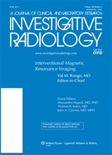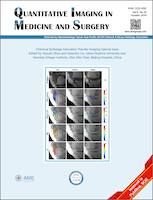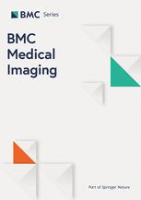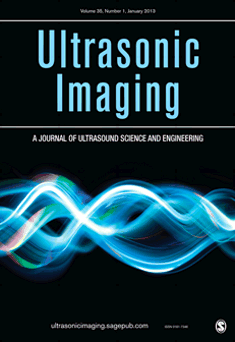
INVESTIGATIVE RADIOLOGY
Scope & Guideline
Shaping Tomorrow’s Imaging Techniques Today
Introduction
Aims and Scopes
- Advanced Imaging Techniques:
The journal explores new and advanced imaging modalities, including MRI, CT, and ultrasound, often focusing on their clinical applications and improvements in diagnostic accuracy. - Contrast Media Research:
A significant area of research within the journal is the development and evaluation of contrast agents, including their safety, pharmacokinetics, and effects on image quality. - Machine Learning and AI in Radiology:
The integration of artificial intelligence and machine learning techniques in radiology for automated image analysis, diagnosis, and workflow optimization is a core focus. - Radiomics and Quantitative Imaging:
Investigative Radiology emphasizes the extraction of quantitative features from imaging data (radiomics) to enhance diagnostic precision and prognostic capabilities. - Clinical Applications and Safety:
The journal frequently publishes studies assessing the clinical efficacy and safety of imaging protocols, including patient-centered approaches and dose reduction strategies. - Multidisciplinary Approaches:
The journal fosters interdisciplinary collaboration, integrating insights from radiology, oncology, and pharmacology to improve imaging outcomes and patient care.
Trending and Emerging
- Photon-Counting CT Technology:
Research on photon-counting CT technology is gaining momentum, focusing on its ability to enhance image quality and reduce radiation exposure, marking a significant advancement in imaging technology. - Artificial Intelligence Applications:
The integration of AI in radiology is rapidly expanding, with studies exploring its potential to improve diagnostic accuracy, automate workflows, and enhance image interpretation. - Personalized Imaging Protocols:
There is an increasing focus on personalized imaging protocols that tailor imaging techniques and contrast media to individual patient needs, aiming to optimize safety and diagnostic outcomes. - AI-Enhanced Radiomics:
The application of AI to radiomics is trending, with emerging studies utilizing machine learning algorithms to analyze imaging features for better diagnosis and prognosis. - Patient-Centered Imaging Research:
An emerging trend is the emphasis on patient-centered approaches, focusing on improving patient comfort and safety during imaging procedures, alongside optimizing diagnostic efficacy.
Declining or Waning
- Traditional Imaging Techniques:
There is a noticeable decrease in the focus on conventional imaging techniques without advanced applications, as research increasingly emphasizes innovative methods that enhance diagnostic performance. - Gadolinium-Based Contrast Agents:
The exploration of gadolinium-based contrast agents, while still relevant, has seen declining attention in favor of new alternatives and methods to reduce or replace these agents due to safety concerns. - Basic Radiological Studies:
Basic radiological studies that do not incorporate advanced imaging or AI technologies are becoming less frequent, as there is a growing preference for studies that apply cutting-edge methodologies.
Similar Journals

Quantitative Imaging in Medicine and Surgery
Advancing Imaging Science for Better Patient OutcomesQuantitative Imaging in Medicine and Surgery is an esteemed journal dedicated to advancing the field of medical imaging through rigorous research and innovative methodologies. Published by AME PUBLISHING COMPANY in China, this journal has established itself with an impressive Q2 quartile ranking in the field of Radiology, Nuclear Medicine, and Imaging, reflecting its dedication to high-quality research. With a comprehensive focus on quantitative imaging techniques, the journal covers a wide range of topics including image analysis, imaging biomarkers, and the integration of imaging in clinical practice, promoting collaboration between imaging specialists and clinicians. As an open access journal, Quantitative Imaging in Medicine and Surgery ensures that its articles are freely accessible, facilitating the dissemination of knowledge to a broader audience. With a commitment to fostering innovation in imaging science, this journal serves as an invaluable resource for researchers, professionals, and students alike, ultimately aiming to improve patient outcomes through advanced imaging strategies and technologies.

Oral Radiology
Pioneering discoveries in the realm of oral radiology.Oral Radiology is a prestigious academic journal published by Springer, dedicated to advancing the field of dentistry and radiology through high-quality research and innovative findings. With a focus on oral imaging, it has established itself as a vital resource for researchers, clinicians, and students alike, striving to bridge the gap between cutting-edge imaging technologies and practical applications in oral health. Covering a diverse range of topics from 1985 to 2024, this journal not only holds a commendable Q2 ranking in both the Dentistry (miscellaneous) and Radiology, Nuclear Medicine and Imaging categories but also ranks impressively within the Scopus metrics, placing it among the top-tier publications in its field. While not an open-access journal, Oral Radiology remains a crucial platform for disseminating significant advances, influencing both academic research and clinical practices. Its rigorous peer-review process ensures that only the highest quality articles are published, making it an essential read for those seeking to stay at the forefront of oral radiological science.

Ultrasound Quarterly
Connecting Professionals Through Cutting-Edge Research.Ultrasound Quarterly is a leading journal published by Lippincott Williams & Wilkins, dedicated to advancing knowledge and practice in the fields of radiology, nuclear medicine, and imaging. Established in 1988, the journal has served as a vital platform for researchers, clinicians, and students seeking to stay abreast of the latest advancements and techniques in ultrasound technology. With an impact factor that reflects its significance in the field—ranking in the Q3 category within its specialty based on the 2023 metrics—this journal reaches a global audience, facilitating knowledge dissemination and fostering innovation. Ultrasound Quarterly publishes original research, reviews, and clinical studies, making it an essential resource for professionals committed to enhancing patient care through effective imaging practices. To explore its comprehensive articles, visit the journal's website for easy access to the latest research findings.

Diagnostic and Interventional Imaging
Advancing the Frontiers of Imaging ExcellenceDiagnostic and Interventional Imaging, published by Elsevier Masson, stands as a prominent journal in the fields of Radiology, Nuclear Medicine, and Imaging. With a significant impact factor and a reputation for high-quality research, this journal is dedicated to advancing the understanding and application of diagnostic and interventional imaging techniques. It has achieved an impressive Q1 ranking across multiple categories including Medicine (miscellaneous) and Radiological and Ultrasound Technology, demonstrating its esteemed position within the academic community. The journal features cutting-edge studies and reviews, reflecting the latest innovations and practices from 2012 to 2024. Researchers, healthcare professionals, and students alike can look forward to accessing valuable insights that drive forward the discipline and improve patient outcomes, as evidenced by its robust Scopus rankings placing it among the top journals in its domain.

Imaging
Elevating Standards in Imaging ResearchImaging, published by AKADEMIAI KIADO ZRT, is an esteemed open-access journal dedicated to the field of medical imaging, established in 2020. With an E-ISSN of 2732-0960 and based in Budapest, Hungary, this journal provides a vital platform for the dissemination of cutting-edge research and advancements in imaging techniques, especially in the realms of radiology, nuclear medicine, and ultrasound technology. While currently positioned in the Q4 category across multiple medical specialties, the journal continues to strive for improvements in visibility and impact, contributing to the evolving discourse in medical imaging. The journal aims to facilitate an inclusive and collaborative environment for researchers, professionals, and students, inviting them to share their findings and insights to enhance the field's development. With open-access availability since its inception, Imaging ensures free and easy access to its content, fostering a greater understanding and appreciation of innovative imaging practices worldwide.

EUROPEAN RADIOLOGY
Shaping the Future of Medical ImagingEUROPEAN RADIOLOGY, published by SPRINGER, stands as a prestigious international journal in the field of radiology, nuclear medicine, and imaging, with an impressive impact factor that underscores its significance among peers. With an ISSN of 0938-7994 and an E-ISSN of 1432-1084, this journal provides a platform for cutting-edge research and advancements in medical imaging from 1991 to 2024. Recognized as a Q1 journal in both general Medicine and the specialized Radiology category by 2023, EUROPEAN RADIOLOGY ranks an impressive #17 out of 333 in its field according to Scopus, placing it in the 95th percentile. While it does not currently offer Open Access options, the journal remains essential reading for researchers, professionals, and students striving to stay at the forefront of developments in diagnostic imaging and related technologies. By contributing to a comprehensive understanding of radiological practices, EUROPEAN RADIOLOGY plays a crucial role in shaping the future of medical diagnosis and patient care.

Magnetic Resonance in Medical Sciences
Exploring New Horizons in Magnetic Resonance MedicineMagnetic Resonance in Medical Sciences is a leading open-access journal published by the Japanese Society of Magnetic Resonance Medicine, dedicated to advancing the field of medical imaging through high-quality research articles and reviews. With a strong focus on radiology, nuclear medicine, and imaging technologies, this journal serves as a crucial platform for the dissemination of innovative studies, as evidenced by its impressive Scopus ranking of #75 in its category and a commendable 77th percentile standing. Since its inception in 2002 and becoming open access in 2016, it has fostered a collaborative research environment, welcoming contributions from both seasoned experts and emerging scholars alike. The journal's commitment to enhancing diagnostic techniques and patient outcomes makes it an invaluable resource for researchers, healthcare professionals, and students passionate about the transformative potential of magnetic resonance imaging. Located in Tokyo, Japan, Magnetic Resonance in Medical Sciences continues to shape the future of medical imaging through rigorous scholarship and impactful research.

BMC MEDICAL IMAGING
Elevating Standards in Diagnostic Imaging Through Open Knowledge.BMC Medical Imaging is a premier open-access journal dedicated to advancing the field of radiology, nuclear medicine, and imaging technologies. Published by BMC in the United Kingdom, this journal serves as a vital resource for researchers, clinicians, and students, fostering a collaborative environment for sharing innovative findings and methodologies in medical imaging. With a commendable impact factor and an impressive Scopus ranking within the top 35% of its category, BMC Medical Imaging provides a platform for high-quality research to be disseminated widely and freely since its inception in 2001. The journal aims to cover a diverse array of topics, from advanced imaging techniques to their clinical applications, enhancing the understanding and effectiveness of diagnostic practices. By contributing to the body of knowledge and facilitating open access to research, BMC Medical Imaging plays a pivotal role in shaping the future of medical imaging and improving patient care.

ULTRASONIC IMAGING
Innovating Diagnostic Imaging for Better Patient CareULTRASONIC IMAGING, published by SAGE PUBLICATIONS INC, is a leading journal within the fields of Radiology, Nuclear Medicine, and Imaging, with a particular focus on advancing the science and application of ultrasound technology. Since its inception in 1979, the journal has provided a platform for high-quality research, featuring innovative studies that bridge theoretical advancements and practical applications, making it an essential resource for researchers and professionals. With a notable impact factor reflecting its robust contribution to the medical community (2023: Q2 rankings in both Radiological and Ultrasound Technology and Radiology, Nuclear Medicine, and Imaging), ULTRASONIC IMAGING serves to disseminate pivotal developments in diagnostic imaging techniques, enhancing the understanding of ultrasound's role in patient care. Researchers are encouraged to explore this journal's collection of cutting-edge articles that push the boundaries of knowledge in ultrasound imaging and its implementation in clinical practices.

DENTOMAXILLOFACIAL RADIOLOGY
Pioneering Research in Maxillofacial RadiologyDentomaxillofacial Radiology, published by the British Institute of Radiology, serves as a premier journal in the realm of radiology, focusing specifically on imaging techniques and methodologies that are essential for the diagnosis and treatment in the dental and maxillofacial regions. Since its inception in 1972, the journal has maintained a rigorous standard for publishing impactful research, currently boasting an impressive impact factor that underscores its relevance and authority in the field. With categorization in Q1 for both Dentistry (Miscellaneous) and Otorhinolaryngology, as well as Q2 for Medicine (Miscellaneous), this journal supports professionals and students alike through the dissemination of cutting-edge research. Although it does not currently operate as an open-access platform, it is accessible for a wide audience eager to engage with the latest advancements in radiology, nuclear medicine, and imaging. By bridging the gap between clinical practice and innovative research, Dentomaxillofacial Radiology continues to be an invaluable resource for academics and practitioners seeking to enhance their expertise and improve patient outcomes in a rapidly evolving field.